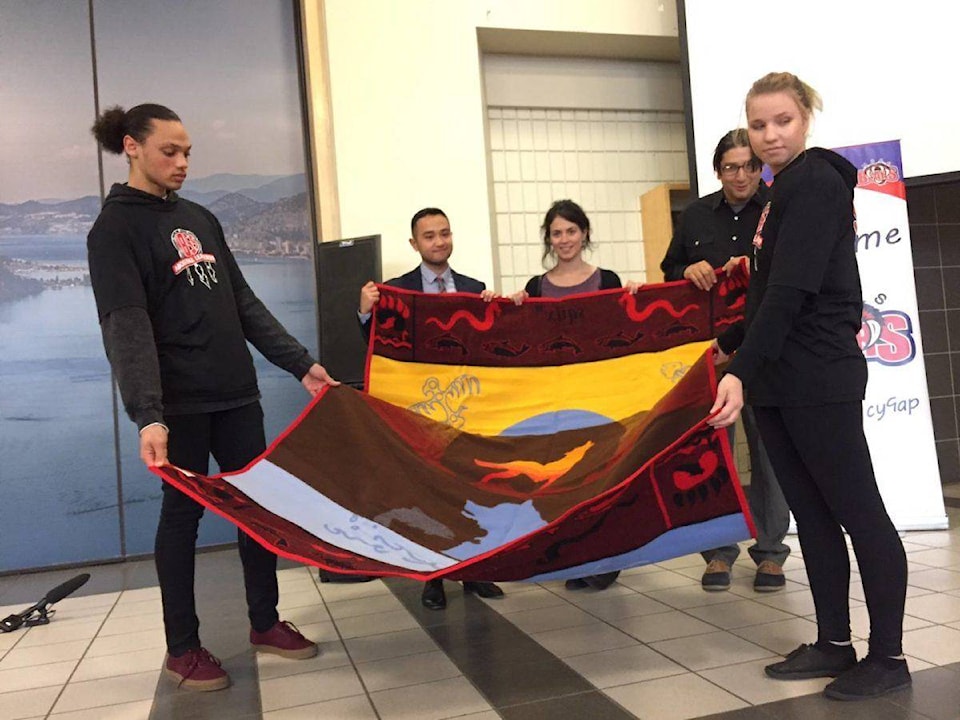Jordan Coble feels both pride in his culture and a weight of responsibility to ensure the Syilx language is preserved for future generations.
“It’s a wonderful thing to gain— as the heart of any culture is the language— but there is a level of stress and pressure that goes along with that,” said Coble, a Westbank First Nation member who works as the cultural and operations administrator at the Westbank First Nation Sncəwips Heritage Museum.
Coble is referring to the findings of the status of B.C. First Nations Languages 2018 report, assembled by the First Peoples’ Cultural Council. It reveals while there is continued progress on Indigenous language revitalization work, there are still serious threats to language vitality as fluent speaking elders pass away, taking their language with them.
“There is an urgent need to document and provide substantial support to ensure that each of the 34 unique First Nations languages and 93-plus dialects in B.C. are maintained for future generations,” stated the report.
Related: Agreement struck to enhance aboriginal education in Central Okanagan
Coble is part of that language resurgence effort, doing his small part as one of 15 students on a four-year language learning program held in Penticton, where he attends learning house classes two days a week.
“It is great that this program has started but ultimately it would be great to see a language program like this taught at learning centres in all of our band communities,” he said.
“It is a challenging and difficult to learn the language, but you also get a reassuring sense of pride in our culture and our history.
“But learning the language becomes a responsibility that needs to be passed on to future generations in a way that is authentic and accurate as possible.”
Part of the difficulty comes from the variety of dialects that exist within the traditional Syilx territory that extends from the southern B.C. Interior into Washington state.
The FPCC report cited several issues facing Indigenous language preservation:
* In 2018, there were 4,132 fluent speakers of First Nations languages in B.C.; this is a decrease of 1,157 since 2014
*Just over half (52 per cent) of the fluent speakers are aged 65 or older, one reason why the fluent speaker numbers are declining
* Younger people have few opportunities to learn their languages
* All Indigenous communities continue to contend with a lack language resources, a scenario that has not changed much since 2014
B.C. is unique within Canada when it comes to Indigenous language diversity, according to the FPCC report.
Within Canada, B.C.’s languages make up more than 50 per cent of the approximately 61 languages indigenous to our country.
Pauline Terbasket, executive director of the Okanagan Nation Alliance, said the FPCC report just reinforces what few already don’t doubt—that Indigenous languages passed on for hundreds of years prior to immigrants settling in North America are in danger of being lost.
“We are seeing some progress about language preservation in the bigger picture, the hope being to revitalize our language and our culture. That is the hope,” Terbasket said.
She said the younger generation, people like Coble, are increasingly dedicating themselves to learning their native language, and specifically in the Central Okanagan School District expanding cultural learning curriculums for Indigenous students at schools like Mount Boucherie Secondary School have generated a positive groundswell of support within the education community and both Indigenous and non-Indigenous students.
Related: National recognition for West Kelowna school Indigenous academy
“We do our best to help support those efforts but there will probably never be enough resources. We have to be creative and innovative in how we support our members learning to speak our languages,” she said.
“That work is humbling and arduous, but it is needed.”
The FPCC report cites a number of methods on how to revitalize B.C. First Nation languages such as increased documentation and archival efforts, the role individuals can play, First Nations chief and council members advocating for language policy collaboration opportunities and better public school and post-secondary system language program learning models.
To report a typo, email: edit@kelownacapnews.com.
<>@BarryGerding
barry.gerding@blackpress.ca
Like us on Facebook and follow us on Twitter.
